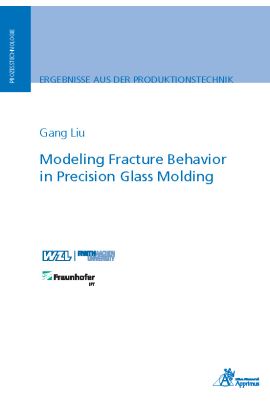Dieses E-Book können Sie hier herunterladen.
Precision glass molding is a replicative manufacturing technology to produce high-quality and complex functionality glass optics. In contrast to the traditional material removal process, such as grinding and polishing, the optical surface is created by deforming glass blanks into the desired shape at molding temperature. By using precise molding tools with optical surfaces, the molded glass components present high shape accuracy and surface quality; therefore, finishing processes are no longer required.
Precision glass molding is a complex thermo-mechanical process, in which the glass lens undergoes high pressure and high thermal shock. That induces high mechanical stress and high thermal stress inside the glass lens. Therefore, the fracture of molded glass components is a very common phenomenon in the precision glass molding process. The current solutions to this problem involve adjusting process parameters, adapting lens/mold design or changing glass types. In this situation labor-intensive and time-inefficient trial-by-error experiments cannot be avoided.
The fracture of glass is a complex phenomenon. Glass behaves brittle at low temperatures, and brittle-ductile transitions occur at high temperatures during the molding process. The focal point of this work is to study the brittle-ductile transition fracture behavior of glass. Therefore three-point bending is introduced to carry out statistical fracture tests of glass specimens under different temperatures and strain rates, which should influence the parameters of the brittle-ductile transition of glass fractures. A fracture model dependent on temperature and strain rates is developed based on Weibull statistics to quantitatively describe the behavior of glass fractures in statistical fracture tests. Under the assistance of FEM simulation, the newly developed fracture model can be used to calculate the fracture probability of glass during the precision glass molding process. Meanwhile, the most probable fracture timing, location of fracture initiation and fracture pattern can be also predicted.
| Autor | Liu, Gang |
|---|---|
| Lieferzeit | 3-4 Tage |
| Gewicht | 0.224 kg |
| Erscheinungsdatum | 21.08.2018 |
Prozesstechnologie
Modeling Fracture Behavior in Precision Glass Molding (E-Book)
Kurzbeschreibung
Dieses E-Book können Sie hier herunterladen.
A temperature and strain rates dependent fracture model is developed based on Weibull statistics to quantitatively describe the brittle-ductile transition of glass fracture in precision glass molding process. Under the assistance of FEM simulation, this fracture model can be used to calculate the fracture probability of glass during the precision glass molding process. Meanwhile, the most probable fracture timing, location of fracture initiation and fracture pattern can be also predicted.

